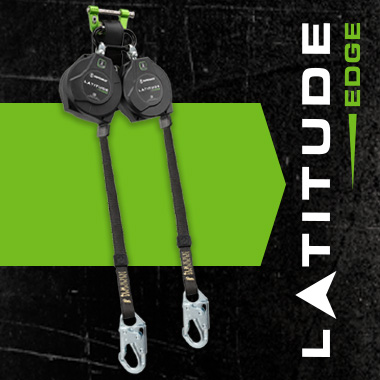A simple way to answer is to ask if there is any chance that the connecting device may come into contact with an edge. If the SRL or lanyard may hit the outer limit of a structure, such as the edge of a roof or side of a beam or deck, the answer is yes. OSHA 1926.751 states:
Leading edge means the unprotected side and edge of a floor, roof, or formwork for a floor or other walking/working surface (such as deck) which changes location as additional floor, roof, decking or formwork sections are placed, formed or constructed.
Attributes:
- Worker may be tied off below D-ring or at foot level
- Often a sharp or abrasive unfinished part of working surface
- Edge changes as the work continues or progresses
Hazards:
- Rough edges may cut or fray device cable or webbing
- Extreme force when connection hits edge can damage device
- Worker subject to longer falls before fall arrest system activates
- Worker subject to greater arrest forces due to isolated cable or webbing over the edge
- Increased swing fall potential for fallen worker
Compliance:
- PPE designed, tested and rated specifically for leading edge
- OSHA requires specialized LE fall protection equipment for any work within 6’ of leading edge
Bottom Line: To ensure worker safety, use only fall protection equipment specifically labeled for leading edge in a leading edge situation.

